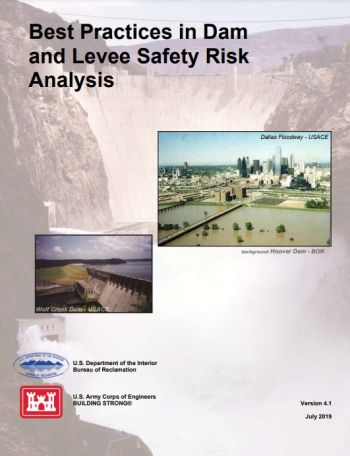Best Practices in Dam and Levee Safety Risk Analysis
Published Jointly by the U.S. Army Corps of Engineers and Bureau of Reclamation,  2019
2019

The Bureau of Reclamation (Reclamation) and the U.S. Army Corps of Engineers (USACE) have been using risk analysis as the primary support for dam safety decision making for over 20 years. Procedures for analyzing risks and understanding of potential failure modes are developing constantly as a result of lessons learned and technological advancements. This Best Practices manual provides guidance for evaluating risks using the current methodology.
Risk analysis at Reclamation and USACE occurs at different levels, ranging from screening level to a fully facilitated team risk analysis. While the tools in this manual apply generally to all levels of risk analysis, more detailed data and analysis are typical for more advanced risk analyses. Practitioners who reference these Best Practices should understand that this manual is intended to provide guidance, but every site is unique, so critical thinking is necessary to characterize risk. For the purposes of risk analysis and risk assessment for dams and levee safety, “RISK” is defined as the product of the likelihood of an adverse outcome and the consequences of that outcome.
The manual is reviewed and updated periodically to stay current with the state of the practice; however, this guidance is not a prescriptive approach. Procedures and data for quantitative dam and levee safety risk analysis do not provide accurate or precise numerical results. Risk analysis teams must balance calculations with judgment to estimate the risks and to build a case for the risk driving influences. The numbers are less important than the identification, understanding, and documentation of the major risk contributors.
Revision ID: 8189
Revision Date: 02/14/2025
